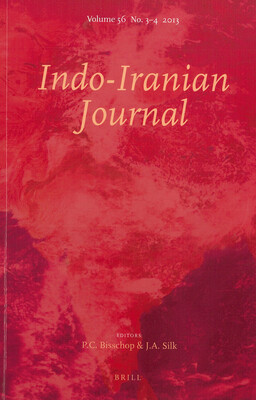This special issue contains articles based on papers given at the symposium Epigraphical Evidence for the Formation and Rise of Early Śaivism, which was held at the University of Groningen, 4-5 June 2012. The contributions present and discuss religious epigraphical data on early forms of Śaivism and its competitors pertaining to its formative period starting with the end of the Gupta-Vākāṭaka period. During this time, religious sectarian movements started to feature prominently in the political landscape of early medieval India (ca. 400 - 1000 CE), one of the most dominant religious traditions in this period being Śaivism, revolving around the worship of the god Śiva. Its propagators developed strong ties to royal houses and grew to be successful in establishing a range of religious institutions under its authority throughout the Indianized world. The theology, mythology and ritual codes of the various branches of Śaivism are recorded in an array of textual material but the most important sources for assessing their historical reality on the ground are contained in the epigraphical corpus. These traces of institutional activities often long predate our extant textual evidence. The articles in this special issue aim to contextualize and correlate these data with the political history and findings from the study of the religious textual corpus, in particular the old Skandapurāṇa.
Table of Content
Jan. N. Bremmer. "Opening Address at the Symposium: Epigraphical Evidence for the Formation and Rise of Early Śaivism"
Alexis Sanderson. "The Impact of Inscriptions on the Interpretation of Early Śaiva Literature"
Natasja Bosma. "The Bāleśvara Temple Complex of Śivagupta: Epigraphical Evidence for the Śaiva Siddhānta and Soma Siddhānta Traditions in Dakṣiṇa Kosala"
Hans Bakker. "The Temple of Maṇḍaleśvarasvāmin. The Muṇḍeśvarī Inscription of the Time of Udayasena Reconsidered"
Peter. C. Bisschop. "Two Pre-Chandella Inscriptions from Kālāñjara"
Yuko Yokochi. "The Development of Śaivism in Koṭīvarṣa, North bengal, with Special Reference to the Koṭīvarṣa-Māhātmya in the Skandapurāṇa
Nina Mirnig. ""Favoured by the Venerable Lord Paśupati". Tracing the Rise of a New Tutelary Deity in Epigraphic Expressions of Power in Early Medieval Nepal"
Annette Schmiedchen. "Patronage of Śaivism and Other Religious Groups in Western India under the Dynasties of the Kaṭaccuris, Gurjaras and Sendrakas from the 5th to the 8th Centuries"
Oskar von Hinüber. "Behind the Scenes: The Struggle of Political Groups for Influence as Reflected in Inscriptions"
Harry Falk. "Śiva or Brahmā? The "Masque Court" at the Bibliothèque Nationale, Paris"
Richard Salomon. "Aṣṭabhujasvāmin: A Reinterpretation of the Ābhīra Inscription from Nagarjunakonda"
Dominic Goodall and Arlo Griffiths. "Études du Corpus des inscriptions du Campā. V. The Short Foundation Inscriptions of Prakāśadharman-Vikrāntavarman, King of Campā
